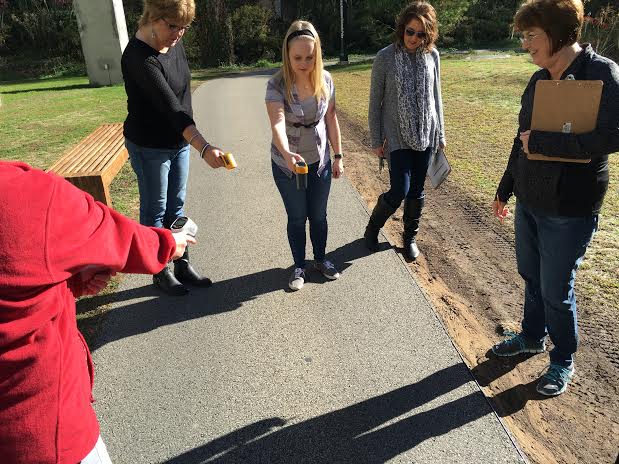
Nearby Nature science program uncovers secrets of the ordinary world
Atoms, molecules and cells — all invisible to the naked eye — are about to get a little more attention from scientifically curious teens, thanks to the recently announced Nearby Nature project.
This fall, the CREATE Lab Satellite Network (CLSN) will pilot the new Nearby Nature program designed to excite middle and high school students’ interest in the air, water, earth and just about anything else they come across in their homes and schools. Participating schools can access and rent from a library of technology to investigate their ordinary surroundings.
Many of the technologies available for students to borrow are recent inventions of the CREATE Lab and the Global Learning and Observations to Benefit the Environment (GLOBE) program. Participants might, for instance, use Speck sensors to measure particulate matter in the ambient air, or CATTfish monitors to test the amount of dissolved solids in water.
As Ryan Hoffman, community outreach coordinator for CREATE Lab says, “The overarching theme is that everything happens in a local context, and anyone can do it.” The project also aims to correct a level of abstraction often found in school classrooms. “The idea is that students are not just collecting data for the sake of collecting data,” Hoffman says. “They’re doing it so that they really understand what’s around them.”

Carnegie Mellon University’s CREATE Lab, which stands for Community Robotics, Education and Technology Empowerment Lab, is designed to better balance the relationships between university laboratories and their local communities. By favoring social connection over detached technological innovation, CREATE Lab aims to empower individuals of all ages and their communities to participate in socially useful scientific inquiry.
The Create Lab Satellite Network is a partnership with four local colleges of education, Penn State New Kensington, and ASSET STEM Education (a Pennsylvania nonprofit that promotes STEM literacy through professional development for educators) to create and share technologies and promote technological astuteness.
Still in its planning stages, Nearby Nature will have a trial run at two middle and two high schools in western Pennsylvania and West Virginia late in the spring semester, before the official pilot in the fall. Currently, teachers are being recruited for training.
In western Pennsylvania, Nearby Nature will launch in the fall at Colonial Campus High in Fayette County, East Franklin High in Greene County, McGuffey Middle School in Washington County and Chartiers Junior High in Washington County. Grants from the Benedum Foundation and Chevron funded the project. For more information, contact Ryan Hoffman at ryan@cmucreatelab.org.
Photo caption for top image: The Nearby Nature team exploring ground temperature at CMU. From left to right: Dawn Embrey-King (RESA 3), Anastasia Klemm (West Liberty University), Tarabeth Brumfield (Marshall University) and Debbie Workman (CREATE lab).